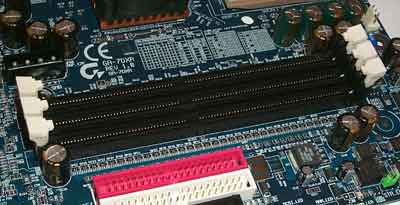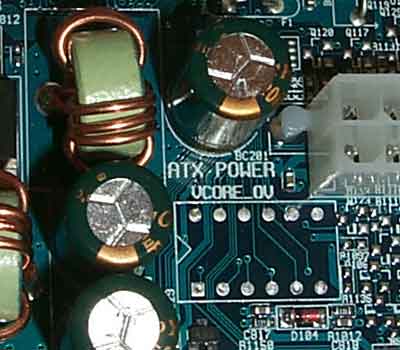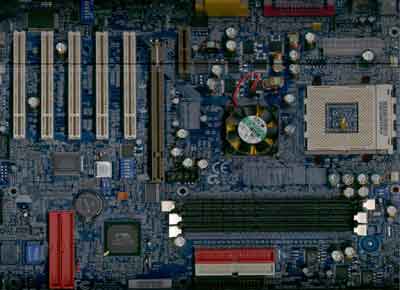Socket-A AMD 760 Motherboard Roundup: Farewell to a Beauty
by Mike Andrawes on November 3, 2001 4:10 AM EST- Posted in
- Motherboards
Gigabyte GA-7DXR
|
Gigabyte GA-7DXR |
|
|
CPU
Interface
|
Socket-462
|
|
Chipset
|
AMD
761 North Bridge
VIA 686B South Bridge |
|
Form
Factor
|
ATX
|
|
Bus
Speeds
|
95 / 100 - 250 MHz (1MHz increments) |
|
Core
Voltages Supported
|
1.775 / 1.800 / 1.825 / 1.850V |
|
I/O
Voltages Supported
|
2.5 / 2.6 / 2.7V
|
|
DIMM
Voltages Supported
|
1.5 / 1.6 / 1.7V
|
|
Memory
Slots
|
3
184-pin DDR DIMM Slots
|
|
Expansion
Slots
|
1 AGP Pro Slot |
|
On-board
Audio
|
Sigmatel STAC9708T AC 97 CODEC
|
|
BIOS
|
Award
Modular BIOS 6.00PG
|
After several designs, Gigabyte finally settled on the GA-7DXR as their main
product for the 760 market. Gigabyte has invested considerable amount of time
on the board, and the result was quite impressive. In fact, AMD uses Gigabyte
boards in the reference systems they send out with new processor releases, showing
their confidence in Gigabyte.
The first thing we noticed with the 7DXR is that Gigabyte finally departed from
their old AMI BIOS setup and started using the more flexible Award Modular BIOS.
Previously, we had seen that the main reason for Gigabyte's relatively poor
performance lay in their non-optimized memory timings. With the 7DXR and the
Award Modular BIOS, Gigabyte is now up to par with other boards in terms of
performance.

There are three DDR DIMM slots on the GA-7DXR.
You will also find a variety of overclocking options, although most of them are only available via dipswitches on the board, with the FSB being the notable exception. Interestingly enough, our review sample did not include the set of dipswitches used for tweaking the CPU core voltages. In the manual it states that you can adjust the CPU core voltage from 1.5V to 1.85V in 0.025V increments using the dipswitches, whereas our board had the adjustments in the BIOS and a range from 1.775 - 1.850V. Not a big deal, but worth noting.

The silkscreen for the dipswitches controlling the CPU core voltage.
The 7DXR features three DIMM slots, rather than the two found on most 760 boards. In fact, it's one of only two boards to offer more than two DIMM slots, the other being the ABIT KG7-RAID. Unfortunately, with all the three DIMM slots populated, we had to back off the CAS latency to 2.5 to maintain sufficient stability.
Like many recent Gigabyte boards, the 7DXR uses the Promise PDC20265R for Ultra ATA 100 RAID, with support for RAID 0 and RAID 1 modes. Also like many boards that use the PDC20265R controller, RAID 0+1 is actually supported on the chip, but not available due to licensing issues with Promise.
Gigabyte of course continues to offer their Dual BIOS setup that should protect you from any failed flashes.











0 Comments
View All Comments